I have a basic bar graph I've created from ggplot2. The y variable contains both positive and negative values and about half the vector of values are negative. I would like to customize the axis labels such that when the y value of that corresponding x factor is a negative, its label is red. Here's a reproducible example:
#Create data
x <- c("a","b","c","d","e","f")
y <- c("10", "9","-10","11","-3","-15")
data <- data.frame(x, y)
data$y <- as.numeric(as.character(data$y))
data$category <- ifelse(as.numeric(data$y)<0, 0, 1)
data$category <- as.factor(data$category)
#Graph
library(cowplot) #theme
library(ggplot2)
ggplot(data, aes(x=x, y=y)) +
geom_bar(stat = "identity", aes(fill=category)) +
theme(axis.text.x = element_text(angle = 45, hjust = 1)) +
theme(axis.text.x = element_text(colour = "black"))
What I need is a way to change the label colors of "c", "e", and "f" to the color of my choosing. I tried toggling theme(aes(axis.text.x=element_text(colour=Air_pricier))) but that produced an error.


